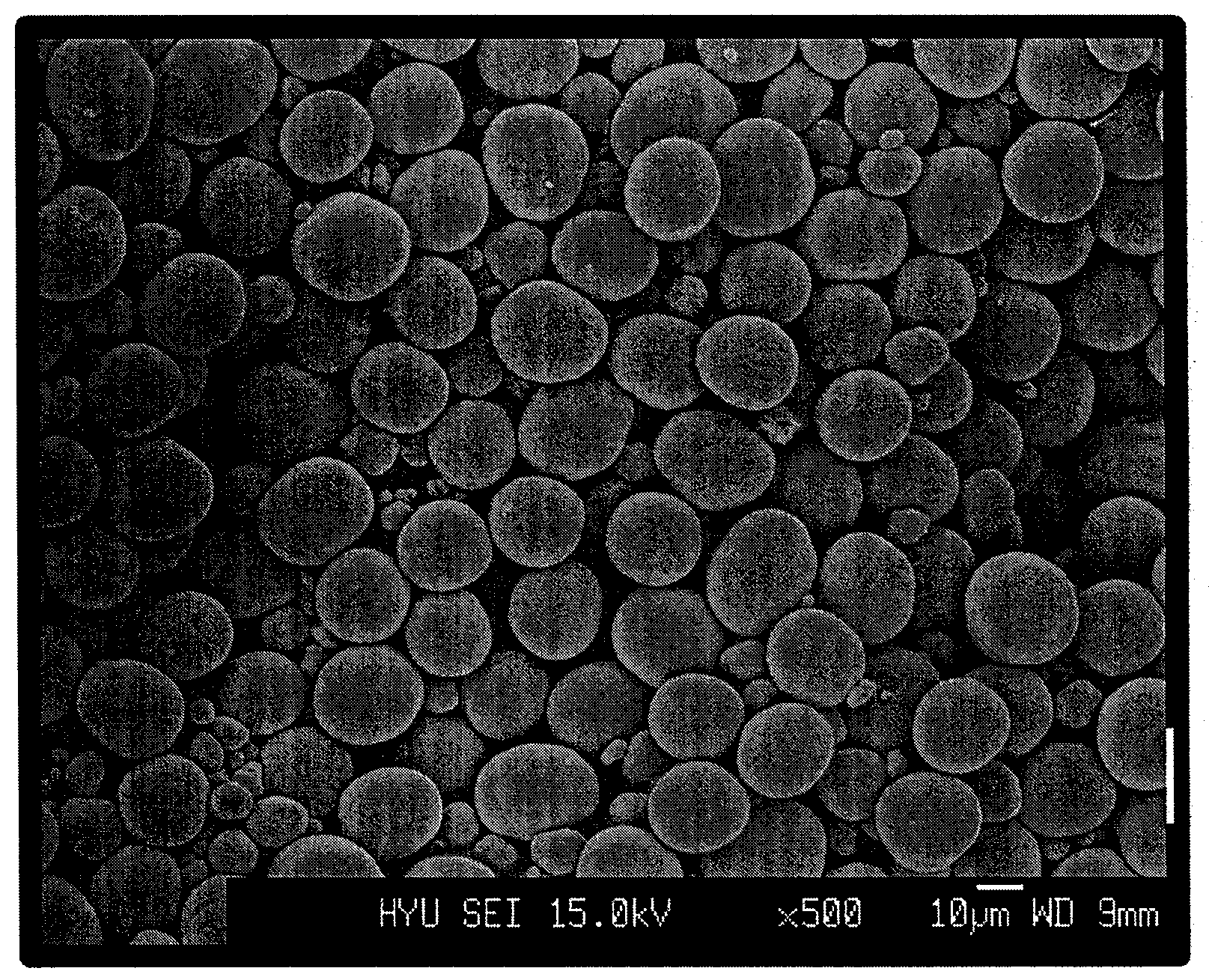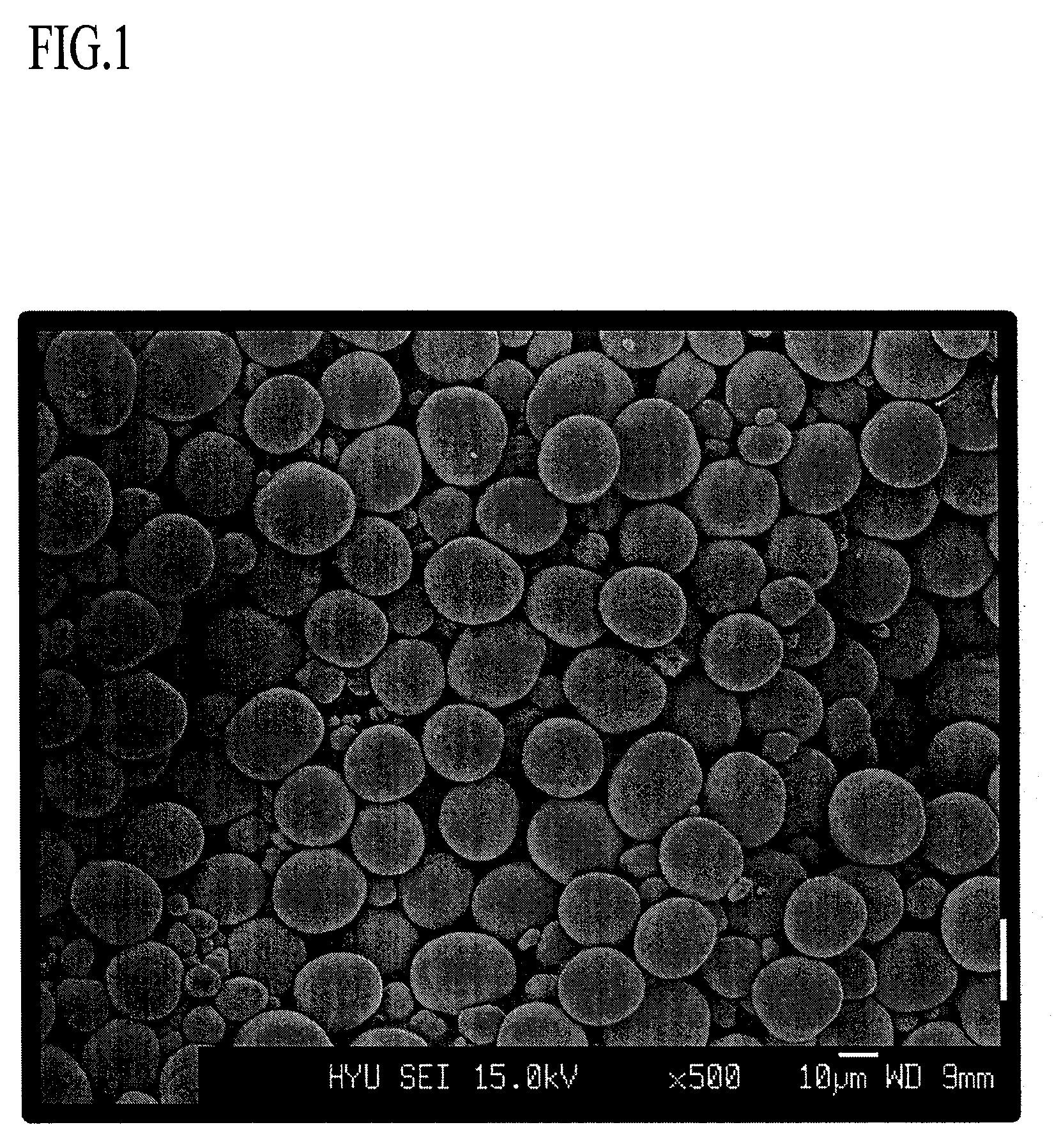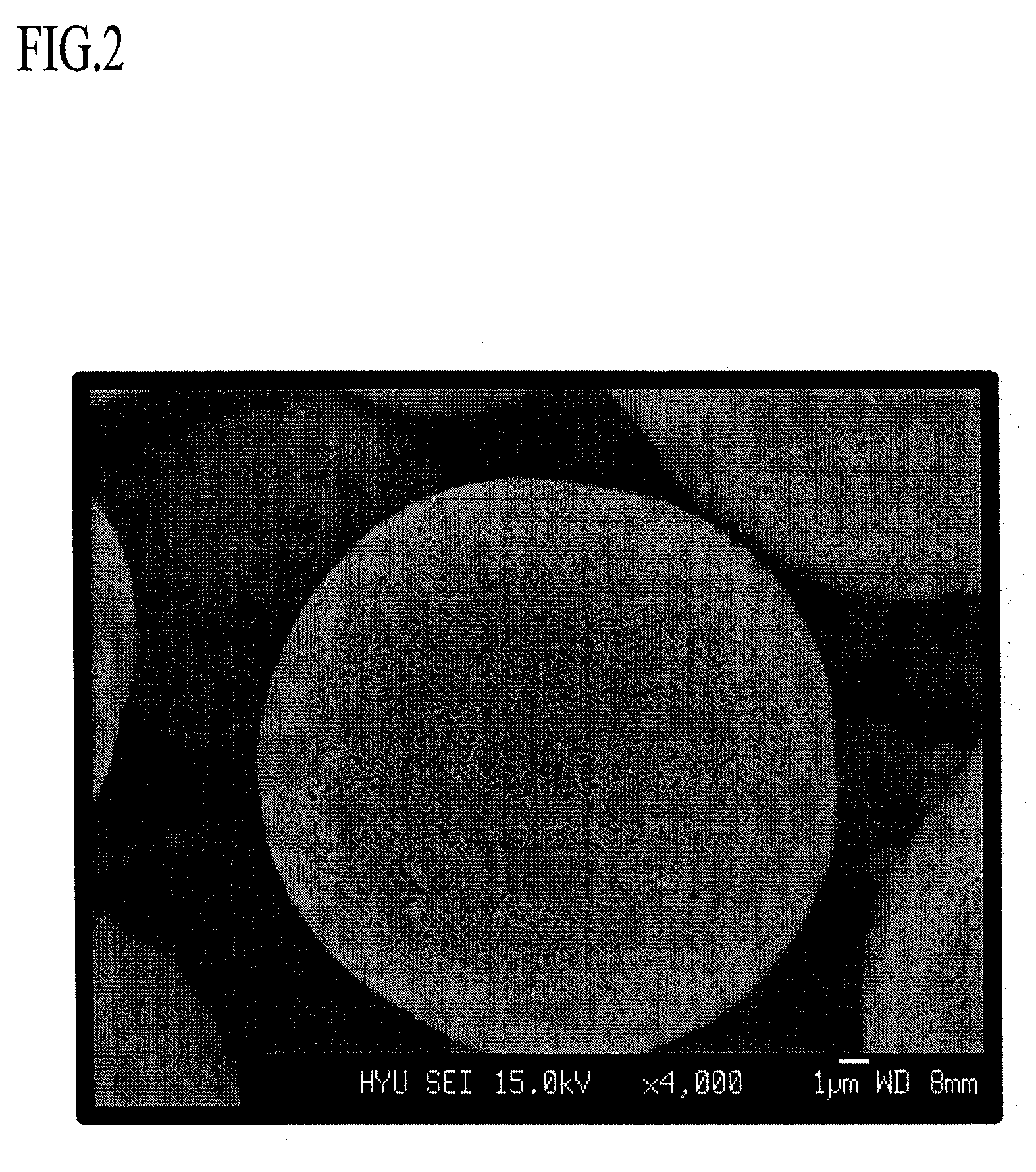Positive active material for lithium battery, method of preparing the same, and lithium battery including the same
a lithium battery and active material technology, applied in the direction of conductive materials, fastening means, railway components, etc., can solve the problems of high price and safety, high cost, fatal deterioration of thermal characteristics of lithium ion batteries,
- Summary
- Abstract
- Description
- Claims
- Application Information
AI Technical Summary
Benefits of technology
Problems solved by technology
Method used
Image
Examples
example 1
Preparation of Positive Active Material
[0077]4 liters of distilled water were introduced into a co-precipitation reactor (4 L, rotating motor output 80 W or more), supplied with nitrogen gas at a rate of 0.5 liter / min, and agitated at 1000 rpm while maintaining a reactor temperature of 50° C. while dissolved oxygen was removed.
[0078]A 2.4 M metal aqueous solution in which nickel sulfate, cobalt sulfate, and manganese sulfate were mixed at a mole ratio of 80:13:7 was continuously added into a reactor at 0.3 liter / hour, and a 4.8 mole ammonia solution was also continuously added into the reactor at 0.03 liter / hour. In addition, a 4.8 mole hydroxide sodium solution was added thereto in order to maintain pH 11.
[0079]The speed of an impeller was controlled to 1000 rpm. The average time of retaining the solution in the reactor was maintained at 6 hours by controlling the flowing amount. After the reaction is reached at the stationary state, the reactant is continued for the retaining time...
example 2
Preparation of Positive Active Material
[0083]A positive active material powder was prepared in accordance with the same procedure as in Example 1, except that the composition of the internal bulk part was LiNi0.8Co0.1Mn0.1O2 and that of the external bulk part was composed of LiNi0.8Co0.1Mn0.1O2 to LiNi0.5Co0.2Mn0.3O2 in a continuous concentration gradient between the two components.
example 3
Preparation of Positive Active Material
[0084]A positive active material powder was prepared in accordance with the same procedure as in Example 1, except that the composition of the internal bulk part was LiNi0.8Co0.1Mn0.1O2 and that of the external bulk part was composed of from LiNi0.8Co0.1Mn0.1O2 to LiNi0.475Co0.05Mn0.475O2 in a continuous concentration gradient between the two components. Herein, the external part bulk composition of LiNi0.475Co0.05Mn0.475O2 had a thermal stability that was better than those of Examples 1 and 2 because Ni was secondary, Co was tertiary, and Mn was quaternary in this composition, and those of Example 1 and Example 2 were Ni-based compositions.
PUM
| Property | Measurement | Unit |
|---|---|---|
| particle diameter | aaaaa | aaaaa |
| particle diameter | aaaaa | aaaaa |
| mole ratio | aaaaa | aaaaa |
Abstract
Description
Claims
Application Information
 Login to View More
Login to View More - R&D
- Intellectual Property
- Life Sciences
- Materials
- Tech Scout
- Unparalleled Data Quality
- Higher Quality Content
- 60% Fewer Hallucinations
Browse by: Latest US Patents, China's latest patents, Technical Efficacy Thesaurus, Application Domain, Technology Topic, Popular Technical Reports.
© 2025 PatSnap. All rights reserved.Legal|Privacy policy|Modern Slavery Act Transparency Statement|Sitemap|About US| Contact US: help@patsnap.com



